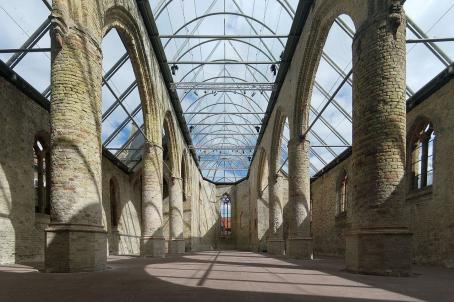Doopsgezinde Kerk
The Bolsward clandestine church is located behind the building line of the buildings in the street. Built in 1809 and expanded and embellished from 1848 to 1855. Framed entrance (all mid-19th century). With a roof turret.
The Bolsward clandestine church is located behind the building line of the buildings in the street. Built in 1809 and expanded and embellished from 1848 to 1855. Framed entrance (all mid-19th century). With a roof turret.
Extremely important, non-oriented, large magnificent church with tower. This is the largest "Bellotian" church building in the Netherlands - that is, the architecture of the church is influenced by the school of the French Benedictine monk and architect, Dom Paul Bellot (1876-1944). The also Bellotian RC Oratoire Saint Joseph in Montréal and the basilica Notre Dame du Cap near Trois Rivières, Quebec, Canada, are larger. Also the St. Chrysole in Comines, France, designed by Bellot himself, is larger.

The Broerekerk was built in the 13th century as a monastery church of the Friars Minor. After iconoclasm, the church passed into Reformed hands in 1578, after which the abandoned monastery buildings were demolished. It served as a reformed church until 1970. The church with three naves without a tower is a ruin following a fire in 1980. The building was given a glass roof in 2006, designed by architect Jelle de Jong.
Built as a Reformed Church. Architecturally extremely important church building. Now a church of the PKN. This (former Reformed) church with accompanying parsonage (Nanne Reynstraat 1) on the Gasthuissingel in Bolsward was built in 1929 in business expressionist architecture designed by JH van der Veen and Ane Nauta. The contribution of each of the architects is still unclear. The church mainly follows the formal language of Van der Veen.